The Recommended Top 10 Best Volume Pedals That Everyone Should Consider
We may also earn commissions on purchases from other retail websites.
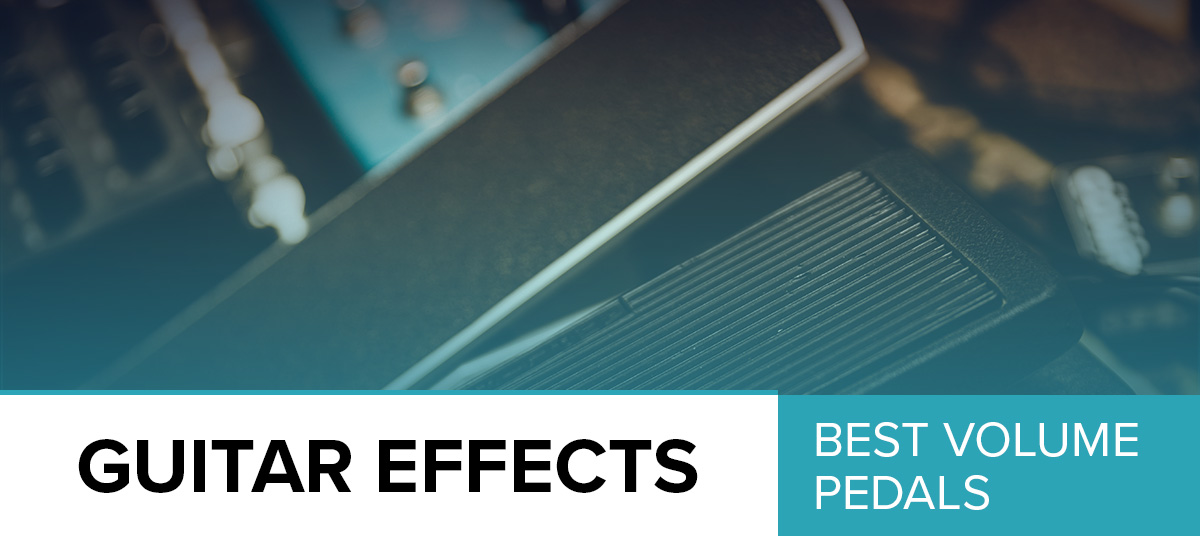
Last Updated November 19, 2019
Volume guitar pedals fall into the category of gizmos that don't really affect your sound in an extreme manner, but are essential nevertheless and can make your performance significantly better.
If you're wondering about what volume pedals do, we can say that their functionality is quite self-explanatory – they control the volume of your guitar. When your guitar is plugged into one of these puppies, the volume gets increased when you floor it and gets decreased as you pull it back. So in a way, a volume pedal is a must have guitar pedal if you want to be have a full control over your output.So essentially, it's up to the user to determine whether the device will be used for increasing the volume, decreasing it, or both.
Top 10 Best Volume Pedals:
| Image | Guitar Pedal / Rating | Summary | Check Price |
|---|---|---|---|
+ -  | Boss FV-500H Total of 4.92/5 | An old and proven design that has become a synonym for reliability. | |
+ -  | Ernie Ball VP Jr. Total of 4.93/5 | Passive but compact pedal that brings different types of pretty awesome swells. | |
+ -  | Dunlop DVP4 Total of 4.72/5 | Versatility combined with great performance and decent price tag. Dunlop delivers again. | |
+ -  | Fender FVP-1 Total of 4.78/5 | Hefty pedal that inspires confidence in every aspect, from reliability to performance. | |
+ -  | Electro Harmonix Expression Pedal Total of 4.80/5 | A rather rugged design that has withstood the test of time successfully. | |
+ -  | Quick Lok VP-2622 Total of 4.63/5 | One of the best solutions for budget users that delivers good performance. | |
+ -  | Boss FV-50H Total of 4.60/5 | Highs speed, low drag pedal that gets the job done with consistency. | |
+ -  | Hotone Soul Press Total of 4.73/5 | A great three-in-one package that brings a very versatile experience all around. | |
+ -  | Morley PLA Steve Vai Little Alligator Total of 4.83/5 | Vai's own creation that offers a modern take on the volume effect. | |
+ -  | Mission VM-1 Total of 4.83/5 | Rugged and reliable, this pedal packs a lot of that clinical precision. |
Boss FV-500H
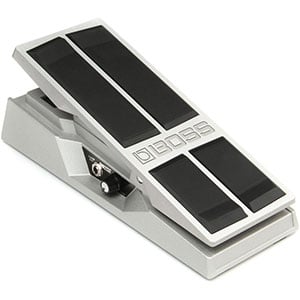
| Controls: |  |
| Features: |  |
| Performance: |  |
| Value: |  |
We’ll kick things off with the mighty Boss and their FV-500H model. This fella is quite possibly the strongest and sturdiest volume pedal we have encountered, featuring a heavy-duty aluminum die-casting body combined with a surprisingly smooth operation regime.
The top part has been enhanced with rubber to secure that the player’s foot firmly grips onto the pedal. We are looking at a mono device, meaning it packs a single input and a single output, as well as an EXP jack for expression pedal use.
Also included in the mix is a dedicated tuner jack to conveniently plug in your tuner. The product weighs in at 3.7 pounds and features a total size of 2.8 x 4.3 x 11.4 inches.
Ernie Ball VP Jr.
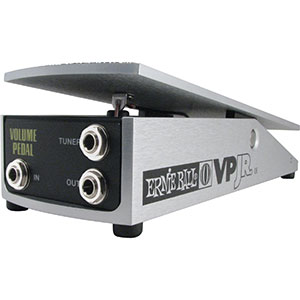
| Controls: |  |
| Features: |  |
| Performance: |  |
| Value: |  |
Another option you simply cannot go wrong with is a trusty Ernie Ball volume pedal. We opted for the VP Jr. model as a fine representative of the smaller body devices.
The thing about many volume pedals is that they are super chunky, and while that’s great in its own right, some players simply want to save space, and that’s where a fella like this comes in. The gizmo operates as a mono device with one In and one Out, along with an added tuner jack.
They praise this dude as one of the strongest pedals of its niche, and we certainly agree that it belongs among the top ones. Overall, it weighs in at 2.6 pounds and features a size of 10 x 3 x 4.5 inches.
Dunlop DVP4
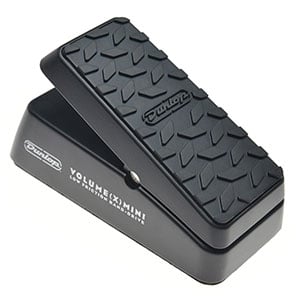
| Controls: |  |
| Features: |  |
| Performance: |  |
| Value: |  |
From the company that gave you the legendary CryBaby wah pedal, we bring you the DVP4. This fella is a solid volume pedal that can control all volume levels and FX parameters.
It has a somewhat smaller size of 6 x 3.5 x 3.5 inches and a lighter weight of 1.3 pounds. It comes in an elegant black casing that’s durable, reliable, and capable of firmly gripping onto the player’s foot.
This is a mono pedal with one input and a single output, as well as a separate AUX jack used for switching to expression mode regime. Additionally, note that the rocker tension is fully adjustable.
Fender FVP-1
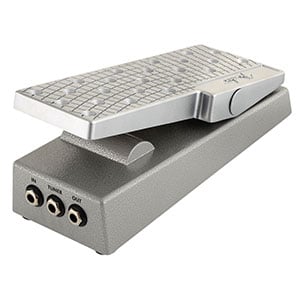
| Controls: |  |
| Features: |  |
| Performance: |  |
| Value: |  |
Up next is a bit more affordable option, which still happens to be sturdy as a tank. Coming from Fender, the FVP-1 is a passive pedal with an all-metal casing. This is a mono device with a specially designed long-life potentiometer and special tone circuitry capable of retaining the instrument’s tone at all audio settings.
There’s three jacks here in total – In, Out, and Tuner for convenient on-stage tuning if that’s your thing. The product weighs in at 1.2 pounds and features a total size of 11.4 x 7.5 x 3.5 inches.
The all-metal shiny vibes gives the user a feeling of high durability and reliability, as well as the ability to kill someone by throwing this puppy onto their head. Killer stuff!
Electro Harmonix Expression Pedal
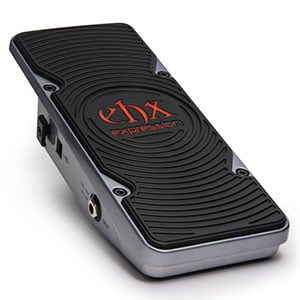
| Controls: |  |
| Features: |  |
| Performance: |  |
| Value: |  |
If you’re into modern gizmos, you will love this Electro Harmonix fella! It’s a pedal with zero moving parts and instantaneous bypass switching, a highly practical and sophisticated piece of equipment that’s incredibly convenient and effective.
It’s very rugged and sturdy, yet smooth and easy to operate. What makes the device stand out from the rest even more are a few advanced features it offers – specifically the Range and Bypass settings.
The looks are smooth and elegant, and build quality is nothing short of amazing. To sweeten the deal some more, the manufacturer threw in a free 6-foot 1/4-inch cable into the mix.
Quick Lok VP-2622
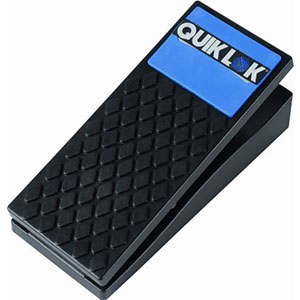
| Controls: |  |
| Features: |  |
| Performance: |  |
| Value: |  |
As one of the strongest contenders for the best cheap volume pedal out there, the VP-2622 model from Quick Lok. Although this is a plastic model – which means it’s of course less durable than some of the previous contenders – it still operates just fine in our book and will serve you well for many years as long as you treat it right.
And seeing that the price is about three times lower than the majority of stronger items, we say this is definitely one heck of a deal. The pedal can be used as volume control or an expression pedal, and features the so-called fortissimo function, which enables the player to accent certain parts of their performance.
It includes a high-performance custom potentiometer, as well as an external potentiometer for manual sensitivity adjustments.
Boss FV-50H
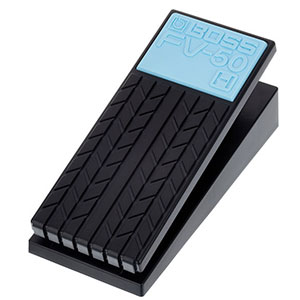
| Controls: |  |
| Features: |  |
| Performance: |  |
| Value: |  |
As another representative of the budget-friendly domain, the Boss FV-50H is a simple, basic, yet highly effective volume and expression pedal. This fella is classified as super lightweight, and features a total size of 9.3 x 4.1 x 2.8 inches.
It’s easy to use, you can take it anywhere with you, and the durability factor is quite alright. Sure, this guy cannot beat the company’s high-end models or the Ernie Ball representative from this list in terms of overall sturdiness and quality, but it can beat them in terms of price, and maybe even the value for money factor.
Our main concert with cheap stuff is that the product ends up being so low-quality that it wasn’t even worthy of that small price tag it had. But this guy is nothing like that. For the listed price, it plain rocks!
Hotone Soul Press
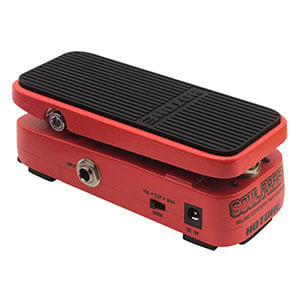
| Controls: |  |
| Features: |  |
| Performance: |  |
| Value: |  |
As a little something different, the Soul Press pedal from Hotone! Apart from being a volume and expression pedal, this fella also packs a wah pedal inside, making it a nifty 3 in 1 type of package. It sports a sexy red finish and a sonic attack based on the iconic original CryBaby wah.
There’s a simple switch to choose between three work modes, and operation in general is smooth as whistle. As for the audio quality, the wah is decent, but that’s not the main focus of this article.
The main thing is that the sound in volume or EXP mode remains crystal clear and organic, making this fella a good deal for the listed price. It weighs in at 8.8 ounces and features a total size of 2.9 x 1.7 x 1.7 inches.
Morley PLA Steve Vai Little Alligator
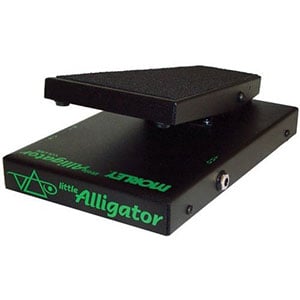
| Controls: |  |
| Features: |  |
| Performance: |  |
| Value: |  |
If you like your pedals to be on the modern, sci-fi edge and carry the name of one of the greatest guitar players who walked the face of the planet, then Morley PLA Steve Vai Little Alligator is the choice for you! In our humble opinion, this is the single sexiest device on the whole list, and the performance quality isn’t half bad either.
While there’s not a whole lot of extra controls on the pedal, all the crucial stuff is included, and perhaps most importantly – the pedal itself is incredibly smooth and comfortable; it will fit just about any player’s foot like a glove ( a foot-glove if you will).
The device features a battery compartment that’s easy to access thanks to LED indication, and comes with a two-year warranty from the manufacturer.
Mission VM-1
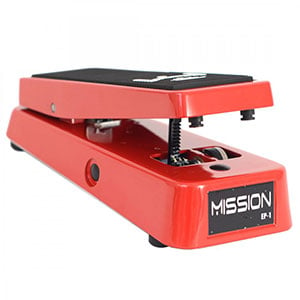
| Controls: |  |
| Features: |  |
| Performance: |  |
| Value: |  |
Finally, another very strong option – the VM1 from Mission Engineering. This pedal was crafted by a family owned company, and we can confidently say that it stands perfectly well against the big companies, even beating a solid majority of them.
The red finish is incredibly elegant and classy, and the overall build quality is nothing short of top-notch. From the moment you lay your hands on this guy, you simply know you’re dealing with high-end goods.
The device features 500k impedance, which is perfect for the majority of passive pickups. The product weighs in at 3.6 pounds and features a total size of 12 x 5 x 5 inches.
And that one wraps it up, folks! However, we believe that answering a few standard questions regarding volume and expression pedals is in order so you can get a clear image of what to expect and what you should know before making the purchase. Here goes!
What To Look For When Buying A Volume Pedal For Guitar?
Granted, volume pedals are much more simple devices than the majority of other guitar pedals and effects, but there's still a few things to watch out for when buying one. First of all, this is a pedal you will probably stomp more than the majority of your other devices (except for the wah pedal, that is), and that requires extended durability.
Thankfully, a solid portion of these fellas really is sturdy as a tank, but there are also cheaper models you have to be more delicate with or risk damage in the long run.
Another thing to take into consideration is the option of buying a mono or a stereo device. As is often the case, mono devices (one input and one output) are capable of covering the needs of the majority of musicians, but stereo pedals (two inputs and two outputs) allow you to insert two instruments into the mix on one side and utilize stereo rigs on the other.
Finally, see if you need a device just for volume control or an expression pedal in the same package. The difference is that volume pedals allow you to control only the output strength of your instrument, while the expression jack allows you to connect any effect to the pedal and control its level.
What Does A Guitar Volume Pedal Do?
We already addressed this question in the intro, but we might as well dedicate a separate segment to it. So, a volume pedal's basic function is to control the output volume of your instrument. Additionally, it can be combined with the expression function, allowing the pedal to control the level of any desired effect pedal you connect it with.
Finally, there are a few models out there that also include the wah effect in the package. This is not exactly a common case, but they're out there. If you find the concept intriguing, we recommend checking out the Hotone Soul Press pedal.
What's The Best Way To Use A Volume Pedal?
Needless to say, there is no “best” way to utilize one of these devices, but there is a certainly a variety of ways to put them into use.
One way to use them is to pull the pedal all the way up and set up your town. This way, you will be able to crank up your volume whenever needed by pressing the pedal and returning it to normal value by pulling it back up. As you might have guessed, this is great for solo spots.
Second way to use the pedal is essentially the opposite thing to the first one – floor the pedal and then make the adjustments. This way, you will be able to decrease your power whenever needed. However, bigger portion of players prefers the first way and then just uses the volume knob or control on their instrument to decrease the power when needed.
Finally, you can leave the pedal somewhere in the middle and then set up. This way, you will be able to go up and down and both increase and decrease your sonic strength. It's the most versatile way for sure, but the tricky bit is returning the pedal to that middle spot once you want to get back to the original value. That's where the first feature from the next segment comes in super handy. Read on!
Useful Features To Watch Out For
There's a nifty a feature called minimum volume comes in very handy, as it allows you to set the amount of volume that will be delivered when the pedal is set to the lowest value. In our opinion, this is basically the key thing to look out for as far as extra features go.
The second thing would be the ability to adjust the flexibility of the pedal, or how hard do you need to stomp to move it. This option gives a personalized feel and allows the player to get the best out of the device.
Finally, some pedals have a tuner out, which allows you to separately plug in a tuner and keep your instrument in proper shape during shows. Not a bad option, but hardly a necessary one.
How Much Money Should I Spend On A Good Volume Pedal?
The answer to that question greatly depends on the quality you're looking to get. But to get a solid pedal, we say at least $60 to $70. If you want a great model, though, around $100 should cover it. Finally, if you want to get cheap volume pedal that will actually do the job despite a few drawbacks, you can get one for as low as $30.
However, if you're delving into the budget-friendly domain, we highly recommend choosing one of the two models we have listed above – Yamaha FC7 or M-Audio EX-P. There's a lot of cheap crap out there – pardon the expression – and these are two low-price models that are definitely decent in our book.
Do I Need To Get Any Additional Paid Accessories With A Volume Pedal?
Actually, volume pedals are the least demanding type of musical gear as far as additional equipment goes. The majority of other devices at least requires you to get a power supply or batteries on the side, but seeing that most of volume pedals are passive tools, they don't even require that. All you will need is an extra cable, so you can connect your instrument to the pedal and then the pedal to your amp, and that's it. Simple and easy stuff, just how we like it!
New vs. Used Volume Pedal
In general, we are pretty much always for getting new stuff. It's safer, cleaner and secured with a warranty. As far as volume pedals go, we most definitely do NOT recommend getting a used cheap pedal. Cheaper models tend to be more prone to damage, and you don't want to end up with a device you can't use for anything. When it comes to more expensive models, they actually are sturdy enough to take a solid beating and still be perfectly usable even as second-hand goods.
But if you are going to delve into the used market, we thoroughly recommend bringing along someone who knows their stuff. Or even better, be someone who knows their stuff!
Conclusion
And this steadily bring us to the very end of our journey, folks. We hope you enjoyed the ride, and may even have found your perfect choice for the best guitar volume pedal. If you're still not determined, we recommend jotting down your exact needs, preferences and spending budget, sifting through our reviews some more, and pinpointing that perfect product.
In our opinion, each of the listed products is worthy of attention of just about any musician, as they all do a stellar job for their respective price range. As long as you are after a solid volume or expression pedal, these are the choices you cannot regret making.
If you enjoyed the ride, make sure to subscribe to our newsletter and keep track of the site for the best deals on the internet. Stay tuned!



John R Miller says
Thx. Could you discuss – active versus passive pedals. Also, passive pedals specifically designed for active guitar electronics. Is it meaningful. Also, tone loss – it that a real thing
Kelsey Austin says
I’m glad you included the Boss FV-500H. I totally agree with your ratings for this beast of a volume pedal. What really convinced me to buy this one was the size and the EXP jack. I can utilize the EXP capability to control volume, gain, distortion, delay speed, reverb decay, and the list goes on.
I’ve been gigging with mine twice a week for the past three years and it is as good as new. It holds up extremely well to abuse, and yet it’s not too heavy. I won’t hesitate to purchase more pedals from Boss.